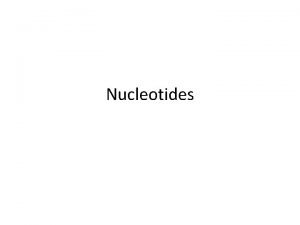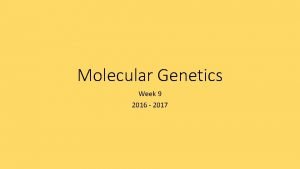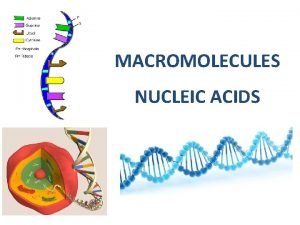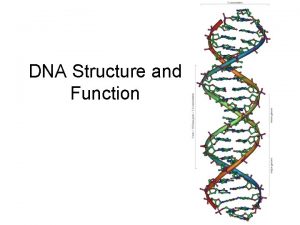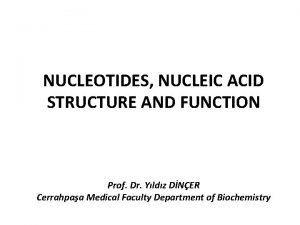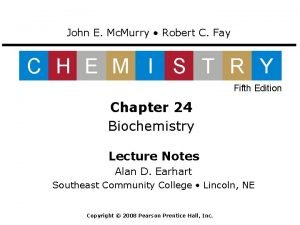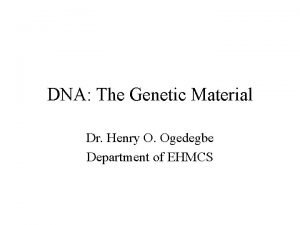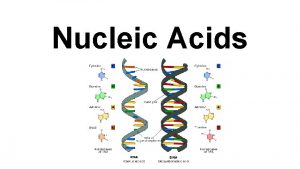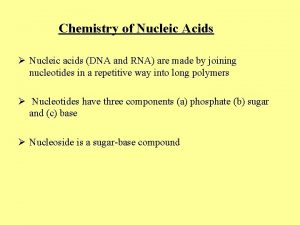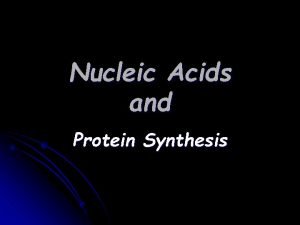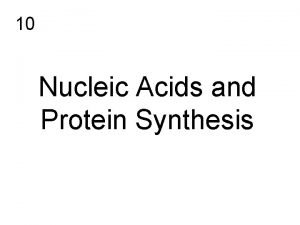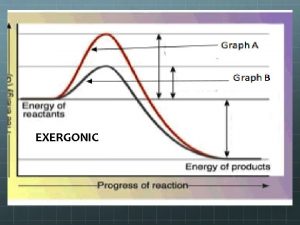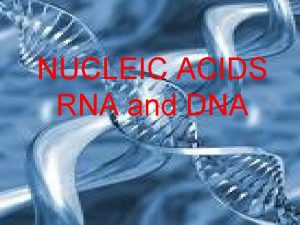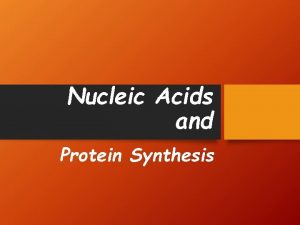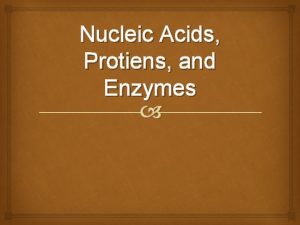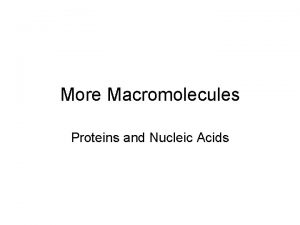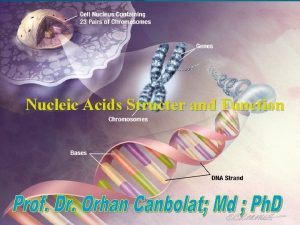Cells and Nucleic Acids Life Sciences Life Sciences
















- Slides: 16

Cells and Nucleic Acids Life Sciences

Life Sciences Key Points: Cells and Nucleic Acids • • • Cells Nucleus and nucleolus Chromosomes DNA Genes RNA

Life Sciences The structures below carry genetic information which control the cell’s metabolic processes. We will now label the structures.

Life Sciences The Cell with its Nucleus

DNA is Found on Chromosomes Each PERSON’S DNA profile is unique!

Life Sciences Do you know how many chromosomes are there in a normal human body cell? Answer 46 (23 pairs)

Life Sciences Do you know why DNA is so important? (The Significance of DNA) • • Answer DNA controls the production of proteins. DNA is responsible for the transmission of hereditary characteristics from cell to cell and from parent to offspring.

DNA Gene Protein Trait

Nucleotides are Building Blocks of DNA A Adenine C Cytosine T Thymine G Guanine

A T C G T A C G A T G T C A

Differences Between DNA and RNA DNA RNA Double strand Single strand Deoxyribose sugar Ribose sugar Thymine replaced by Uracil

DNA Replication • What? • When? • Why? • How?

DNA Replication Unzip into two single strands

The End Result of DNA Replication - Two identical strands are formed. Each strand now becomes a double helix. Strand 1 Strand 2

DNA Replication • With cell division - New cells require exact copies of the DNA as it is in the mother cell. Step 1: DNA unwinds, becomes ladder-shaped. Step 2: Weak H-bonds break, DNA molecule unzips. Step 3: Each strand forms a complementary strand for itself - Nucleotides attach G - C and A - T Step 4: Each strand becomes a double helix. The end result is TWO identical DNA molecules. • Sometimes mistakes happen – mutation

Life Sciences Key Points: Cells and Nucleic Acids • • • Cells Nucleus and nucleolus Chromosomes DNA Genes RNA
 Building blocks of nucleic acids
Building blocks of nucleic acids Hydoxyle
Hydoxyle Nucleic acids concept map
Nucleic acids concept map Nucleic acid building blocks
Nucleic acid building blocks Dna polymer and monomer
Dna polymer and monomer Significance of nucleic acid
Significance of nucleic acid Protein synthesis
Protein synthesis Nucleic acids
Nucleic acids Nucleotide properties
Nucleotide properties Store and transmit genetic information
Store and transmit genetic information Function of nucleic acids
Function of nucleic acids Picture of macromolecules
Picture of macromolecules Nucleic acids
Nucleic acids Functions of nucleic acid
Functions of nucleic acid Development of paranasal sinuses
Development of paranasal sinuses Red blood cells and white blood cells difference
Red blood cells and white blood cells difference Venn diagram animal and plant cell
Venn diagram animal and plant cell
